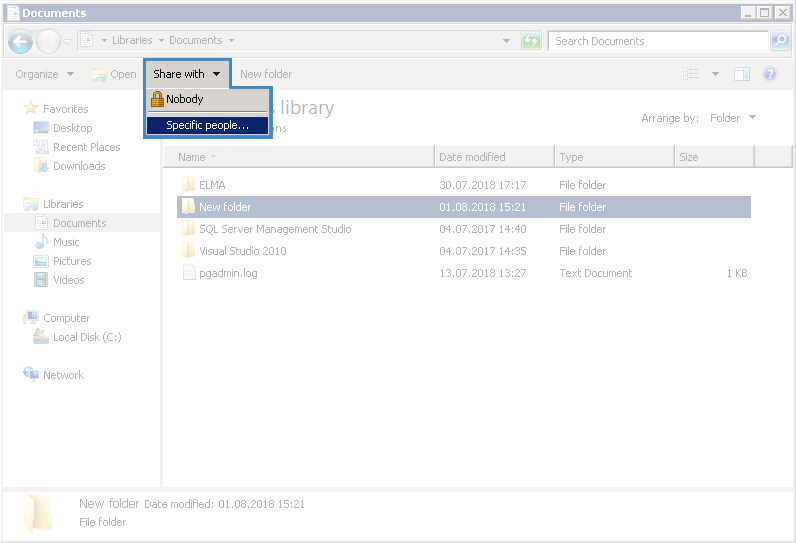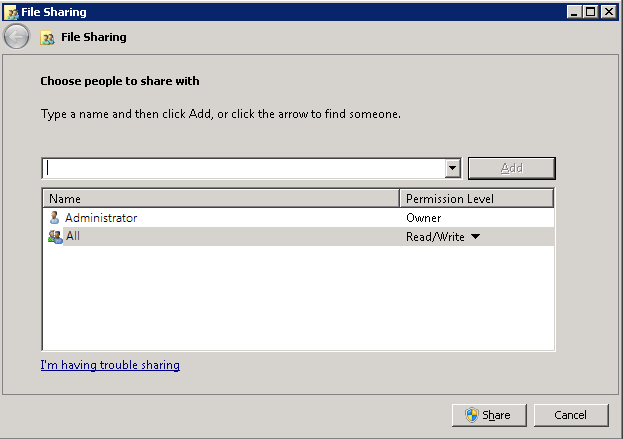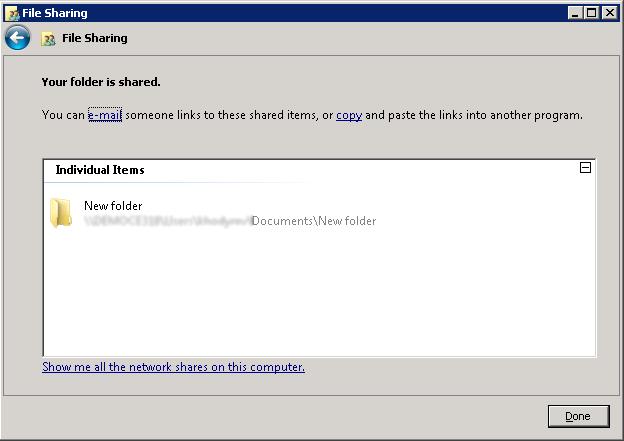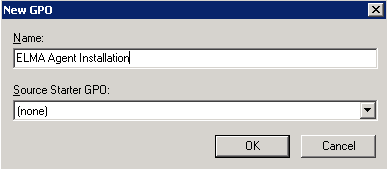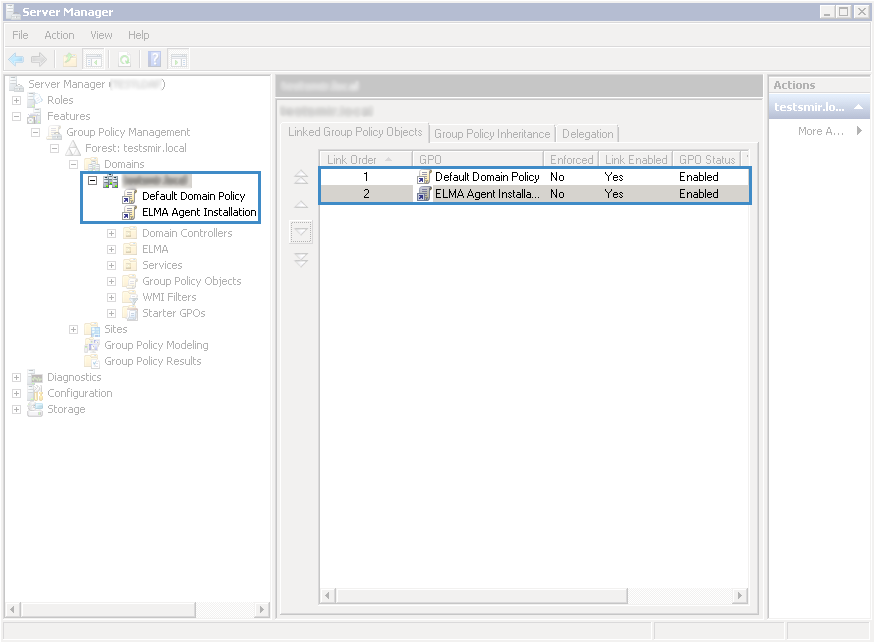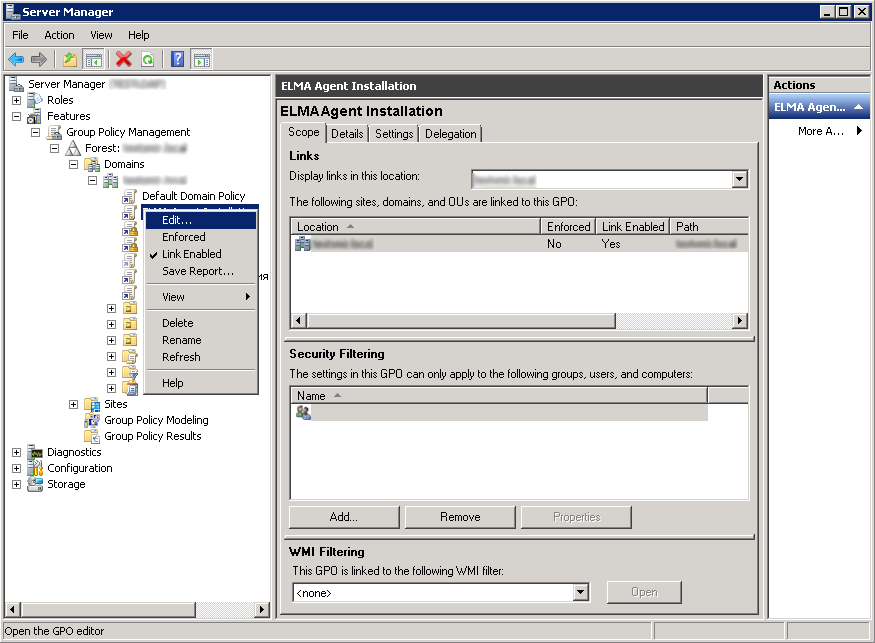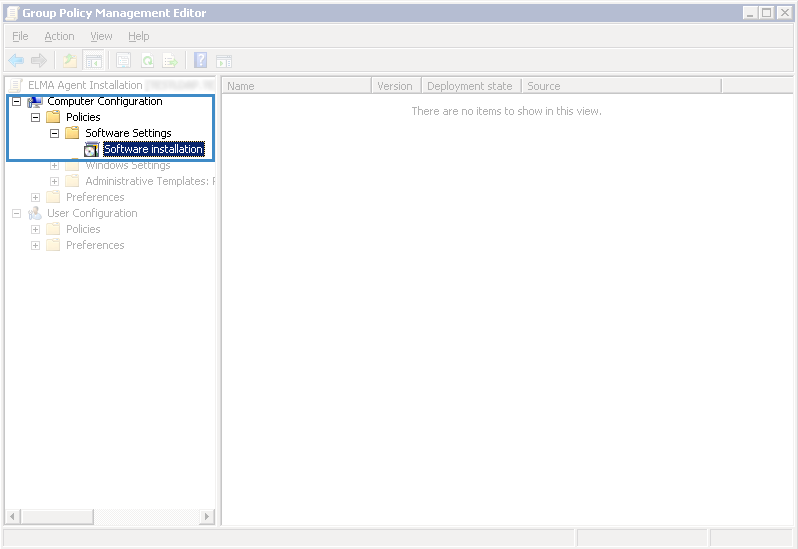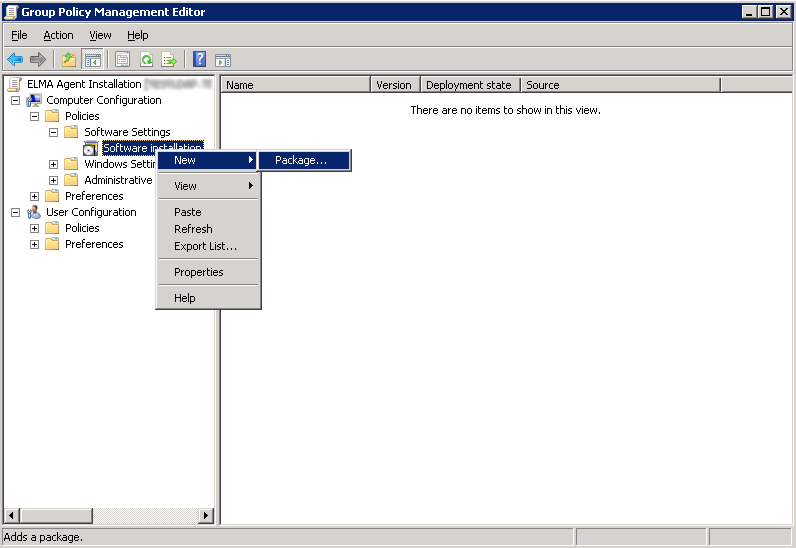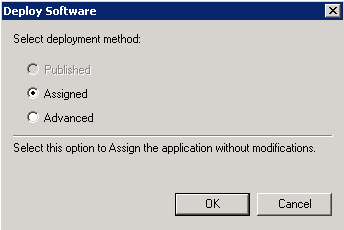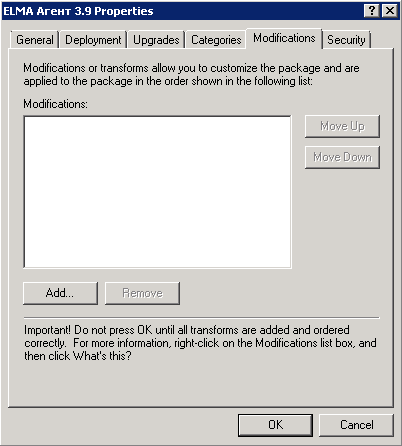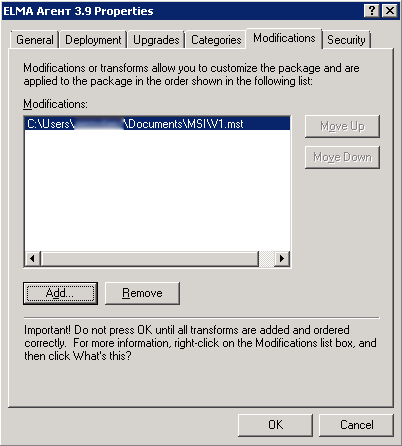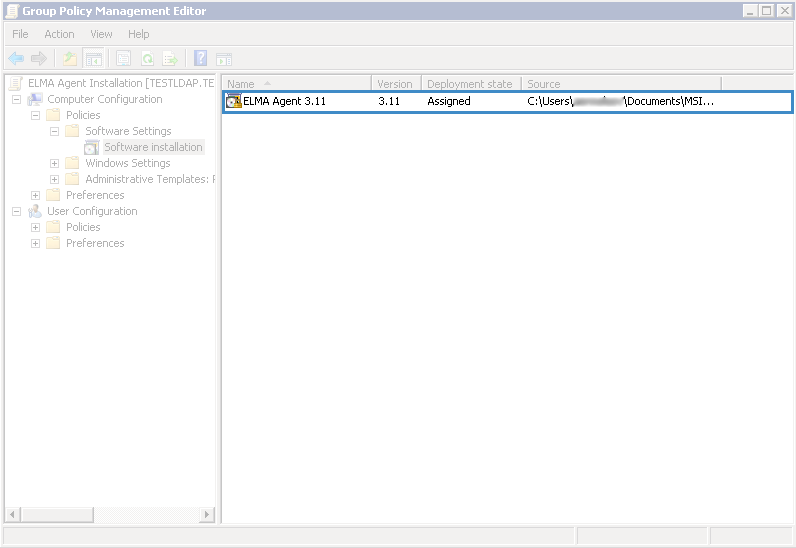Installing ELMA Agent in a Domain
If you need to install ELMA Agent simultaneously for several users on different computers, you can do it using group policies.
|
Attention!
1. For this to work correctly, all the Windows users' machines (including virtual machines) must be in the same domain.
2. To install ELMA Agent using group policies you are going to need domain administrator permissions.
|
The process of installing ELMA Agent using group policies consists of several steps.
|
Note
The settings, described below, are performed in Windows Server 2008 R2 Enterprise.
|
Step 1
At this step, you need to create a network folder, and place the ELMA Agent installer there. The installer is an .msi file named elmaagent-activedirectory.msi, located in ..\<ELMA directory>\Web\Modules\EleWise.ELMA.Documents.Web\Content. There are two ways to create a network folder:
1. Create a folder (in any directory), left click on it, ant select Share with – Specific people… in the toolbar (fig. 1).
Fig. 1. Folder toolbar. Share with - Specific people... button
2. Create a folder (in any directory), right-click on it and in the context menu select Share with – Specific people… (fig. 2).
Fig. 2. Folder context menu. Share with - Specific people... item
In the opened dialog box, select the users, who will have access to this folder (it is recommended that you select the All user group and at least Read access level) and click Share (fig. 3).
Fig. 3. File sharing settings
To finish creating a network folder, click Done in the opened dialog box (fig. 4).
Fig. 4. Finishing creating a network folder
In some cases you may need to install ELMA Agent with predefined parameters, e.g. server address or sign in options (Windows single sign on). In this case, you also need to get a transformation file using a tool for editing MSI files (e.g. ORCA). Next, place the transformation file (with the .mst extension) to the network folder with shared access (you can use the same folder, to which you put the .msi file).
Step 2
At this step, you need to create a new group policy object. To do so, open the server manager (Start – All Programs – Administrative Tools – Server Manager). Go to Features – Group Policy Management – Forest: <forest name> - Domains and open the context menu of the required domain by right-clicking on it. In the context menu, select Create a GPO in this domain and Link it here… (fig. 5).
Fig. 5. Server Manager. Domain context menu. Create a GPO in this domain and Link it here... item
In the opened window, enter the object name and click OK (fig. 6).
Fig. 6. Creating a GPO
A new group policy object will be created in this domain (fig. 7).
Fig. 7. Server Manager. New GPO "Install ELMA Agent"
Step 3
At this step you need to select an ELMA Agent installation package for the created GPO. To do so:
-
open the context menu of the created GPO by right-clicking on its name and select Edit... (fig. 8).
Fig. 8. Server Manager. GPO context menu. Edit... item
Group Policy Management Editor will open.
-
in the opened window, go to Computer Configuration – Policies – Software Settings and select Software installation (fig. 9);
Fig. 9. Group Policy Management Editor.
-
open the context menu of Software installation and select Create - Package… (fig. 10).
Fig. 10. Group Policy Management Editor. Software installation context menu. Create - Package... item
-
in the opened dialog box, select the ELMA Agent installer, located in the network folder, configured at step 1 (fig. 11). Note, that when selecting the installer you cannot use Windows File Explorer, because it returns the local path to the file. A path to a network folder looks like this: \\<ServerName>\ MSI, where MSI is the shared access folder.
Fig. 11. Selecting an installer
-
in the opened window, select a software installation method (fig. 12):
Assigned – if you are installing ELMA Agent without additional parameter (not using the .mst file);
Advanced – if you are installing ELMA Agent with additional parameters (using the .mst file).
Fig. 12. Selecting deployment method
Click OK.
If you select the Advanced deployment method, ELMA Agent properties window will open (fig. 13). Open the Modifications tab, click Add… to specify a path to the .mst transformation file (fig. 14). Keep in mind, that the transformation file is in the network folder, created at step 1.
Fig. 13. ELMA Agent properties
Fig. 14. ELMA Agent properties
-
the selected installer will be added (fig. 15).
Fig. 15. Added ELMA Agent installer
After rebooting local computers, included in the domain, ELMA Agent will be automatically installed and shortcuts will be added to desktops. ELMA Agent installation process will not be shown to users.
Copyright © 2006–2019 ELMA

